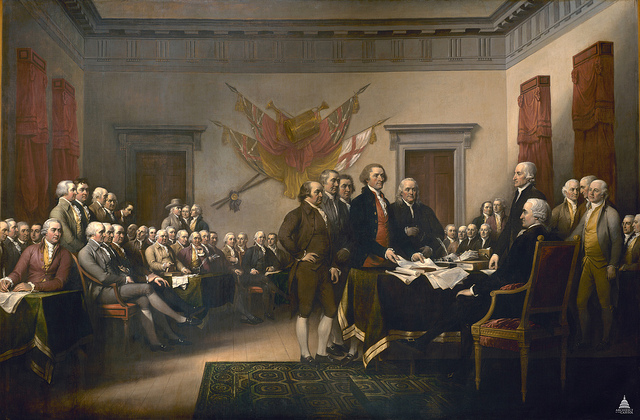FRESH FROM HIS WINNING PREDICTION IN THIS YEAR’S PRESIDENTIAL ELECTION, HARVEY ASHER ANALYZES THE FUTURE OF THE TEA PARTY.
History suggests that the changing of the guard—Democrat to Republican and vice versa—takes place roughly in ten-to-twelve year cycles. A tally of the years the Republicans and Democrats have held the presidency over roughly the last century (1910–2006) favors the former by only 52 to 44. Only once has the same party kept the presidency for more than two terms: Democrats under Roosevelt and Truman (1933–1952) and Republicans under Ronald Reagan and George H.W. Bush (1981–1992).
There are limits on how far liberal Democrats can push “radical” social agendas. That is why Franklin Roosevelt emphasized his redistributive economic policies were meant to give a hand, not a handout. Likewise, there are limits as to how much “radical” Republicans can uninstall social programs that have come to be seen as rights. Ronald Reagan did not mess with Social Security, and George W. Bush’s efforts at privatizing it quickly fell by the wayside, as will those of Congressman Paul Ryan to privatize Medicare.
The Tea Party movement is one clear indicator that democracy is still alive in America. It was largely a grassroots movement begun by citizens unhappy with the direction the country was going, and lacking confidence in either of the two mainstream parties to change it. It considered the Democrats dangerous because of their tax-and-spend philosophy and insufficient commitment to God, patriotism, and family values, while the sin of the Republicans was moving away from its raison d’etre: reducing taxes, balancing the budget, focusing on God and country, and espousing conservative social values.
Changing political landscapes suggest that reform exhortations by the Democrats eventually smother the body politic, which becomes exhausted by the constant crusade for change. Republican emphases on freeing up the market and having wealth trickle down to the average American give way to a perception that they care only about the wealthy.
Certainly, there was reason to be upset at the political stalemate in the first half of the Obama administration during which the Republicans became the Party of No, while the libertarian-like Tea Parties denounced long-established functions of the national government. Even if the 2012 Republicans won the presidency (extremely unlikely), however and Tea Party candidates obtained a majority in the House and Senate, such a victory would not lead to dramatic change. In office, they would have to go beyond “just saying no.” If they wanted to get anything of significance done, along the line, they would need the support or non-opposition of Democrats, and traditional Republicans to their radical agenda. The checks and balance system of American government applies not only to the three branches of government, but to the limits of a single political party to push through its agenda by itself.
Republicans and the reader would be well advised to remember the 1993–1994 midterm elections, when with a Democrat in the Oval Office, the party experienced a bloodbath, losing nine seats in the Senate and fifty four in the House, perhaps the most impressive off-year comeback in recent memory before the November, 2010 debacle. Minority Whip Newt Gingrich got 367 House candidates to sign off on his Contract with America, which pledged to transform the way Congress worked by offering ten broad goals very similar to the ones offered by Republican and Tea Party activists today: a balanced budget amendment, cuts in capital gains taxes, the line item veto, and limitations on corporate liability. How many Americans still remember that Contract with America today? It was a complete failure, and President Clinton easily won reelection in 1996, while in the 1998 midterm election, the Democrats picked up seats in the House, leading Gingrich to resign as House Speaker.
More traditional Republican conservative would also have to reign in Tea Party allies who eschew compromise –we don’t deals, we want solutions (ours) to paraphrase Texas Representative Joe Walsh’s position on raising the debt ceiling. He and his ilk and don’t respond to the usual carrots of pork barrel promises and loss of reelection to bring them on board, making the task a difficult one as House Speaker John Boehner found out when negotiating a deal on raising the debt ceiling with the President and the Democratic leadership.
If the Tea Party radicals set the agenda, the Grand Old Party will have to worry about more than losing elections. Its very existence will be on the line. Whatever the dynamics between Republican traditionalists and these upstarts, undoing the Democratic agenda is not a sufficient goal for them to exercise power long term.
The Tea Party will fairly soon fade into oblivion because it is incapable of becoming a third party with an appealing national platform. Whatever its clout at moment as an issue driven entity, it lacks any central organization that commands all of the members’ loyalties, and its agenda and tactics are not supported by a large majority of Americans.
Harvey Asher
After receiving his doctorate from Indiana University, Harvey Asher taught a variety of courses in history and interdisciplinary studies for thirty-five years at Drury University, a liberal arts school in Springfield, Missouri. His articles on themes in Russian history, American history, and the Holocaust have appeared in the Russian Review, Kritika, the Journal of Genocide Research, the Russian Dictionary, the SHARF Newsletter, Federalism in America: An Encyclopedia, and Lessons and Legacies of the Holocaust. He is also the author of The Drury Story Continues, an informal but thorough history of the school.


![Let's Go to Chinatown, Shall We? [PHOTOS]](https://sheamagazine.com/wp-content/plugins/special-recent-posts-pro/cache/MjAwMTAwbm9jaGluYXRvd24tMi1idy0=.jpg)
![Sunset - Pelham Shore Park - Long Island Sound [PHOTOS]](https://sheamagazine.com/wp-content/plugins/special-recent-posts-pro/cache/MjAwMTAwbm9JTUdfMzM3MC1SRVNJWkU=.jpg)
![Scenes from Washington Square Park - NYC [PHOTOS]](https://sheamagazine.com/wp-content/plugins/special-recent-posts-pro/cache/MjAwMTAwbm9JTUdfNDA1Mg==.jpg)







![Let's Go to the Empire State Building - Shall We? [PHOTOS]](https://sheamagazine.com/wp-content/plugins/special-recent-posts-pro/cache/MjAwMTAwbm9JTUdfMzkxNjE=.jpg)






